
Integrated solar panels are a technological marvel that seamlessly blends functionality with aesthetics to revolutionize how we harness the sun’s energy. So, this type of solar panel, also known as building-integrated photovoltaics (BIPV), represents a groundbreaking approach to incorporating solar technology.
This article wants to dig into the details of integrated solar panels and the impact they have on residential and commercial structures. They seamlessly blend into architectural designs and enhance energy efficiency. So, integrated solar panels have emerged as a key player in the renewable energy landscape.
What are integrated solar panels?
Integrated solar panels incorporate solar power technology directly into the design and structure of buildings. Unlike traditional solar panels, which are mounted on top of existing roofs or structures, integrated solar panels are seamlessly integrated into the building envelope.
These solar panels serve a dual purpose: generate renewable energy and become an integral part of the building’s architecture. They can take various forms, such as solar windows, solar roof tiles, solar facades, or solar panels incorporated into building materials like glass or concrete. The idea is to merge sustainable energy production with the aesthetics and functionality of the building, creating a more harmonious and efficient use of space.

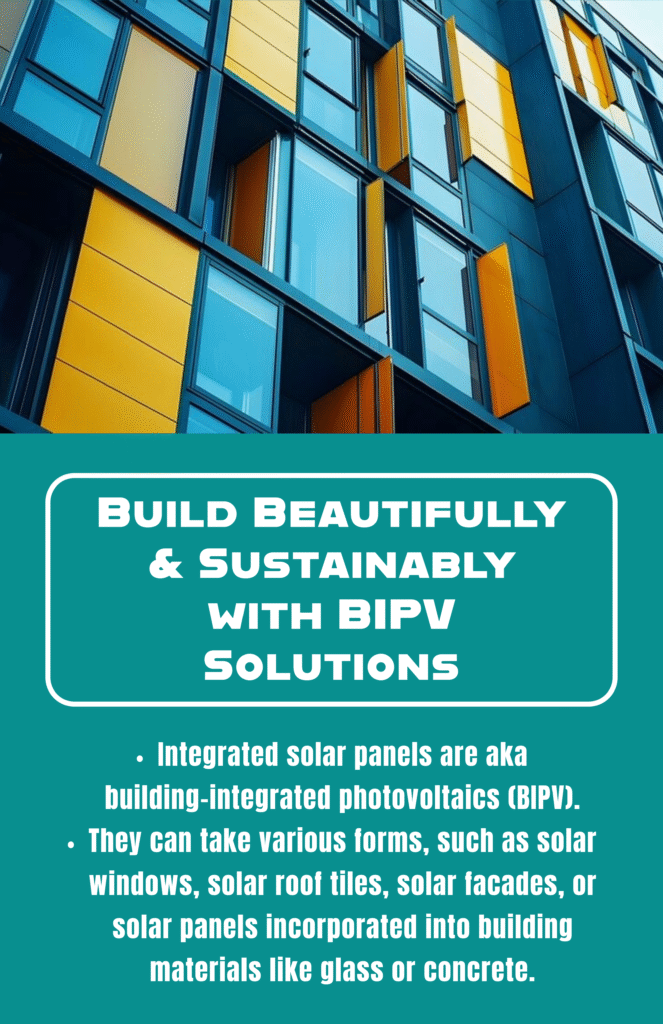
Advantages and disadvantages of integrated solar panels
Pros
Cons
Advantages explained
- Aesthetic Integration: They blend seamlessly into the architecture of buildings. So, you can incorporate them into various building elements such as roofs, windows, or facades, enhancing the overall visual appeal without compromising functionality.
- Space Utilization: They serve a dual purpose by generating electricity and fulfilling a structural or design function. This maximizes the efficient use of space, especially in urban environments where available space is at a premium.
- Increased Energy Efficiency: By integrating solar panels directly into the building, you can use the energy generated. In other words, you can reduce transmission losses associated with transporting electricity from a remote power plant. This results in increased energy efficiency and lower energy bills for the building occupants.
- Reduced Carbon Footprint: Using integrated solar panels contributes to the reduction of greenhouse gas emissions by generating clean, renewable energy. This aligns with global efforts to combat climate change and promotes a more sustainable and environmentally friendly energy source.
- Reduced Electricity Bills: While the initial installation cost may be higher, they can lead to significant long-term cost savings. Buildings with integrated solar solutions often experience reduced dependence on the grid, resulting in lower electricity bills over time.
- Increased Property Value: Properties equipped with integrated solar panels tend to have higher market values. The combination of energy savings, environmental appeal, and the integration’s aesthetic value can make such properties more attractive to buyers or tenants.
- Financial Incentives: Many governments and local authorities offer incentives, tax credits, or rebates for the installation of solar panels. These financial benefits can offset the initial costs and make integrated solar solutions more economically viable.
- Technological Innovation: The growing interest in integrated solar solutions has spurred research and development in the field, leading to continuous technological innovations. This can result in improved efficiency, durability, and design flexibility for integrated solar panels.
- Energy Independence: Integrated solar panels provide a degree of energy independence by generating power on-site. This can be particularly advantageous during grid outages or disruptions, ensuring a continuous power supply for critical functions.
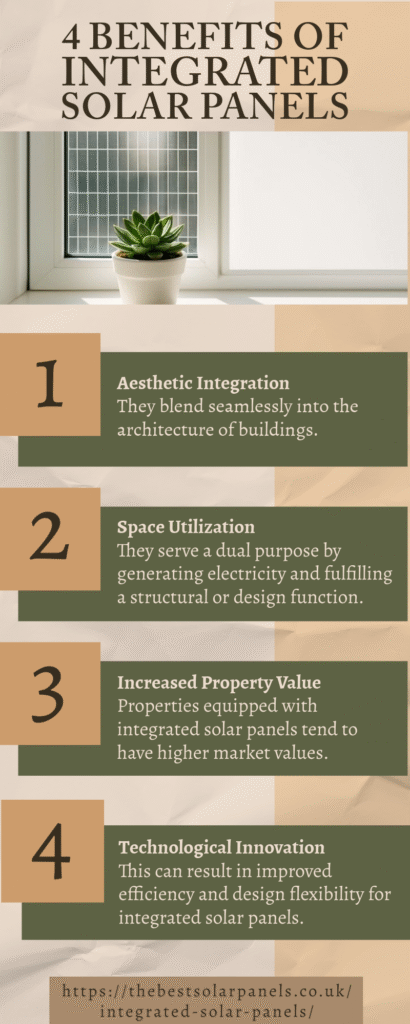
Disadvantages explained
- Installation Costs: The upfront cost of installing them is often higher than traditional rooftop solar installations. The specialized design and integration processes can contribute to increased installation expenses.
- Complex Installation: Integrating solar panels into building materials requires careful planning and coordination between solar installers and construction teams. This complexity can lead to longer installation times and potential technical challenges.
- Reduced Efficiency: Integrated solar panels may have slightly lower efficiency compared to traditional solar panels. The integration process can impact the orientation and tilt angle, potentially affecting the overall energy output.
- Less Flexibility in System Design: Integrated solar panels may offer fewer design options compared to traditional solar installations. Design constraints imposed by the building’s structure can limit the optimization of the solar panel orientation and tilt for maximum efficiency.
- Maintenance Challenges: Maintenance and repair can be more difficult because of their embedded nature. This can increase the difficulty and cost of addressing issues that may arise over time.
- Rapid Technological Changes: The integration process involves incorporating solar technology into building materials, and these materials may have a longer lifespan than the solar panels themselves. This could potentially limit the ability to upgrade to more advanced solar technologies without replacing the entire integrated system.
- Optimal Sun Exposure: The effectiveness of integrated solar panels depends on the building’s orientation and the amount of sunlight it receives. Buildings with limited sun exposure may not fully capitalize on the energy-generating potential of integrated solar solutions.
- Building Codes and Regulations: Integrated solar panels may face challenges in complying with local building codes and regulations. Obtaining approvals for unconventional building-integrated designs can be a bureaucratic hurdle.
- Risk of Damage: Integrated solar panels, especially those integrated into surfaces like windows or facades, may be more vulnerable to accidental damage during construction or maintenance activities, potentially affecting their performance.
- Limited Retrofitting Options: Retrofitting existing buildings with integrated solar panels can be logistically challenging. So, they may require substantial modifications to the structure.
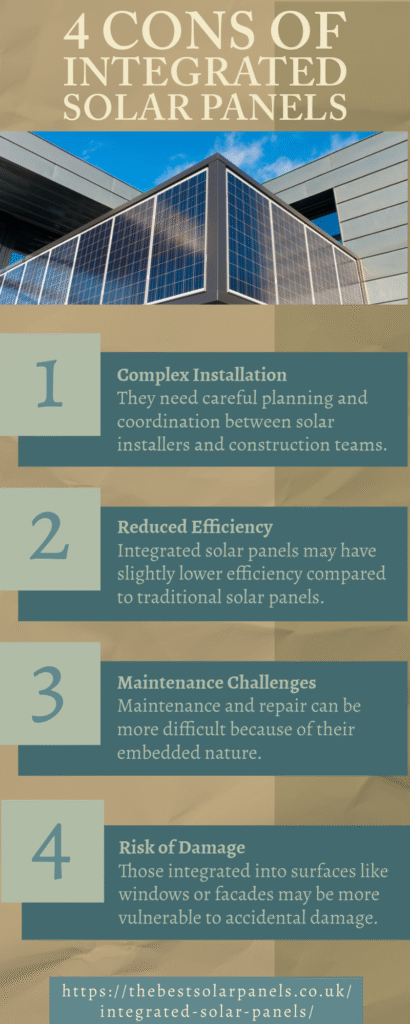
Which are the best integrated solar panels manufacturers in the UK?
Tesla (formerly SolarCity)
Tesla, known for its electric vehicles, also offers solar products, including integrated solar roof tiles. These solar tiles seamlessly blend with traditional roofing materials, providing an aesthetically pleasing and efficient solar solution.
Viridian Solar
Viridian Solar specializes in the integration of solar panels into roofing materials. Their Clearline Fusion solar roof-integrated system integrates into a variety of roofing materials.
Suntech
Suntech is a global solar module manufacturer, and they have been producing integrated solar products. Their solar roof tiles and solar facades merge with the architecture of buildings.
Polysolar
Polysolar focuses on transparent solar solutions that can be integrated into windows and facades. Their transparent solar panels allow natural light to pass through while generating electricity.
Build Solar
Build Solar, a spin-off from the University of Exeter, has developed solar-integrated construction materials, including solar bricks and solar cladding, for integration into building structures.
How Much Does Roof Integrated Solar Cost in the UK?
The cost of roof-integrated solar panels in the UK can vary based on several factors, such as:
Solar Roof Tiles:
Roof-integrated solar tiles, such as those offered by companies like Tesla (Solar Roof), can be more expensive than traditional solar panels. The cost per square meter or per installed kilowatt-hour can be higher because of the integration of solar technology into the roofing material.
Solar Roofing Systems:
Integrated solar roofing systems, where the entire roof is designed to function as solar panels, can also have a higher initial cost than traditional solar installations. These systems often involve custom designs and specialized installation processes.
Transparent Solar Panels:
Transparent solar panels integrated into windows or skylights may have a different cost structure. While they offer a unique aesthetic and functional appeal, they may be priced differently from traditional rooftop solar installations.
Installation Costs:
The complexity of the installation process can significantly impact the overall cost. Integrated solar solutions may require specialized labour and coordination with construction teams, leading to higher installation costs compared to traditional solar panel installations.
Incentives and Rebates:
In the UK, government incentives, tax credits, and feed-in tariffs can help offset the initial cost of solar installations. You may explore available incentives to understand the potential financial support for your project.
Manufacturer and Quality:
The choice of manufacturer and the quality of the integrated solar panels play a role in determining the overall cost. Established and reputable manufacturers may offer higher prices but often provide reliability and performance.
Size of Installation:
The size of the integrated solar installation, measured in kilowatts (kW) or square meters, will impact the overall cost. Larger installations tend to have economies of scale, potentially reducing the per-unit cost.
How do you integrate solar?
Here’s a general overview of how solar integration is typically got:
Design Planning:
Solar integration begins with careful design planning. Architects, engineers, and solar professionals collaborate to determine the most suitable building elements for integration, such as roofs, facades, windows, or other surfaces.
Material Selection:
Building materials with integrated solar properties are selected or developed. This may include solar roof tiles, solar glass, solar facades, or other materials that can generate electricity while serving their primary structural or aesthetic functions.
Solar Panel Installation:
Solar panels are integrated directly into the chosen building materials during manufacture or added as a layer during construction. The panels can be thin-film, crystalline silicon, or other types of solar cells, depending on the application and design requirements.
Electrical Wiring and Connection:
Wiring and electrical components are integrated into the building to ensure the seamless flow of electricity generated by the solar panels. This includes connecting the solar panels to inverters that convert the direct current (DC) generated by the panels into usable alternating current (AC) for building use.
Structural Considerations:
Structural engineers play a crucial role in ensuring that the integration of solar panels does not compromise the structural integrity of the building. The additional weight and wind resistance of integrated solar elements are considered during the design phase.
Inverter and Electrical System Integration:
Inverters convert DC power to AC power. They are integrated into the building’s electrical system. This step is essential for ensuring that the electricity generated by the solar panels is compatible with the building’s electrical grid.
Aesthetic Integration:
Aesthetic considerations are taken into account to ensure that the integrated solar elements seamlessly blend with the overall design of the building. This may involve choosing materials, colours, and placement that enhance the structure’s visual appeal.
Testing and Certification:
After installation, the integrated solar system undergoes testing to verify its functionality, efficiency, and safety. You can get certifications to comply with industry standards and regulations.
Monitoring and Maintenance:
Integrated solar systems have monitoring tools to track performance over time. Regular maintenance, though potentially more challenging than traditional solar installations, is necessary to ensure the longevity and optimal functioning of the integrated solar elements.
Connection to the Grid or On-Site Use:
You can use the electricity that the integrated solar system generates to meet the building’s energy needs or feed back into the grid, depending on the specific design and local regulations.

Are integrated solar panels and roof tiles the same?
Integrated solar panels and roof tiles are not the same. They serve different functions and have distinct features:
Integrated Solar Panels:
Integrated solar panels are solar photovoltaic modules seamlessly incorporated into various building elements. These panels can take different forms, such as being integrated into windows, facades, or roofing materials.They generate electricity while serving as an integral part of the building’s structure.
Solar Roof Tiles:
Solar roof tiles, on the other hand, are solar panels that mimic the appearance of traditional roofing materials. These tiles replace or work alongside standard roof tiles, providing both a protective covering for the building and a source of solar power. Solar roof tiles are a subset of integrated solar solutions that focus on the roof as the primary integration point.
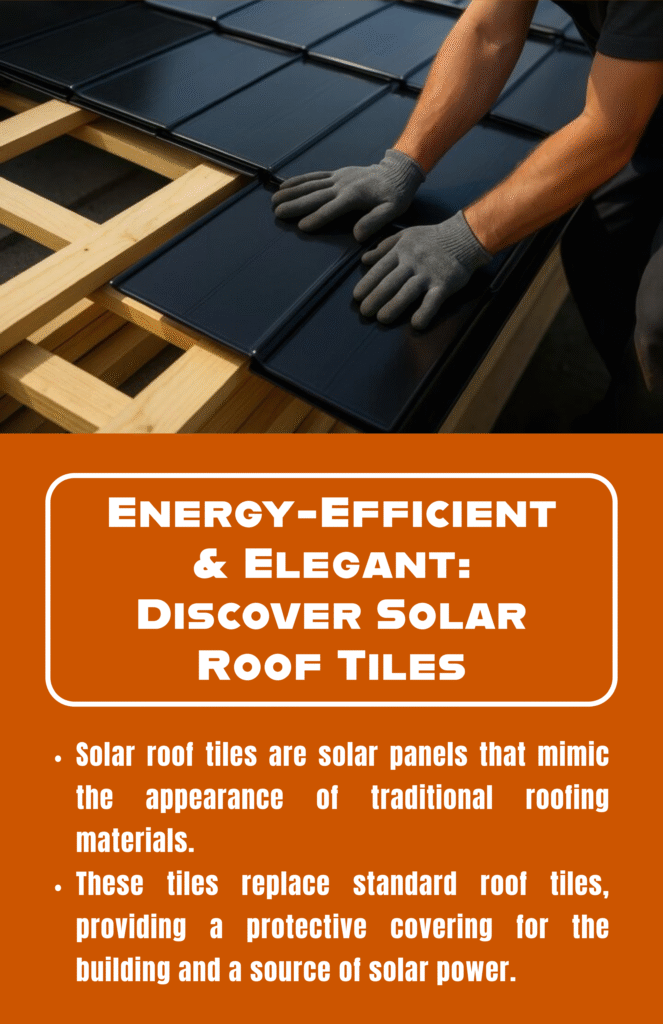
Conclusion
The pros of integrated solar panels are clear, from their ability to enhance the visual appeal of buildings to the efficient utilization of space. Besides, they contribute to reducing our carbon footprint. Yet, it’s crucial to acknowledge the challenges, such as installation complexities and potential maintenance issues. As technology advances, the future of integrated solar panels in the UK holds great promise.
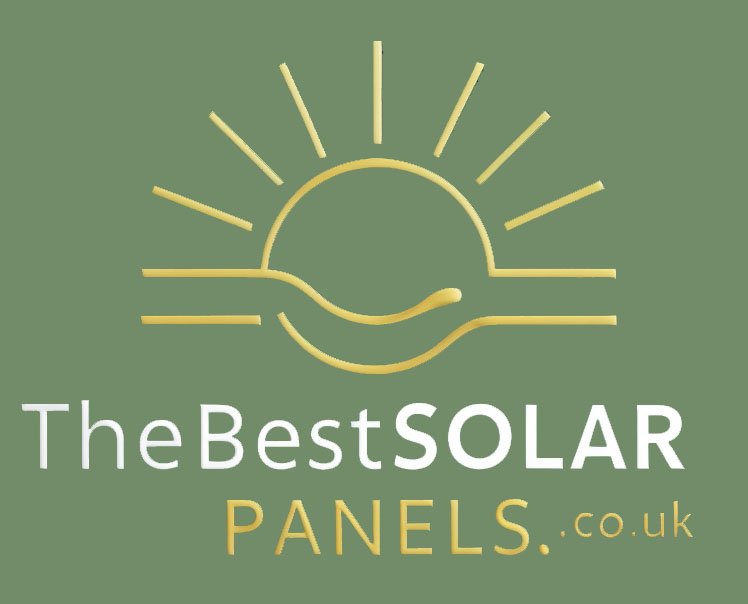


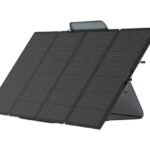
Leave a Reply